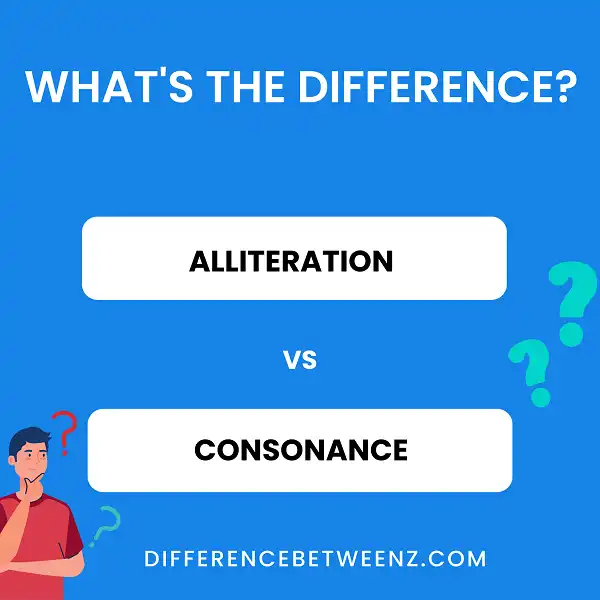Do you ever wonder why some phrases just sound better than others? Ever experience the sensation of a phrase rolling off your tongue? It could be because of alliteration or consonance – two powerful poetic devices used to add rhythm and emphasis to words. In this blog post, we’ll explore the differences between alliteration and consonance so that you can use these powerful tools in both poetry and prose. So, let’s dive in and discover how we rhyme with reason!
What is Alliteration?
Alliteration is a powerful literary device used to achieve emphasis and create a pleasing rhythmic effect for readers. Alliteration is achieved through repetition by creating words or syllables that begin with the same sound. Alliteration can also be found in everyday conversation, often used rhetorically to emphasize or recall something.
Alliteration gives speakers and writers the opportunity to emphasize things they feel are important or memorable, creating not only an emotional appeal but an effective auditory one as well. Alliteration can make writing more enjoyable and more easily remembered by readers, making it an attractive device for authors looking to capture their audience’s attention.
What is Consonance?
Consonance is a literary device that is used to create emphasis within a text. It involves the repetition of consonant sounds at the end of words, usually in close proximity to each other. Consonance helps to draw out emotion and add a sense of rhythm or pattern that can be pleasing to the ear and draw the reader further into the text.
Consonance can be found in literature, poetry, songs, speech, and more; it is an effective way to add emphasis or capture mood without relying on italicized words or other devices. Consonance also adds drama and intrigue, allowing authors to explore new depths within their works.
Difference between Alliteration and Consonance
Alliteration and Consonance are both literary terms used to create sound effects in a text.
- Alliteration involves the repetition of consonant sounds at the beginning of words, while Consonance typically involves the repeated use of consonant sounds in the middle or end of words.
- Alliteration expresses fuller patterns and can be used to lend greater emphasis or interest to a sentence, while Consonance can simply add rhythm to written expression.
- Alliteration is helpful when trying to create poetry or lyrical language because it adds an interesting pattern that can make words more memorable, but Consonance should also be considered for its ability to make slightly longer words feel more rhythmic.
Conclusion
Alliteration and consonance are both effective ways to add emphasis to your writing. Alliteration is the repetition of initial sounds, while consonance is the repetition of final sound clusters. Both devices can be used to add rhythm and interest to your writing, but alliteration is more likely to create a memorable phrase or slogan. If you’re looking for a literary device that will help make your writing more interesting and enjoyable to read, try using alliteration or consonance.


